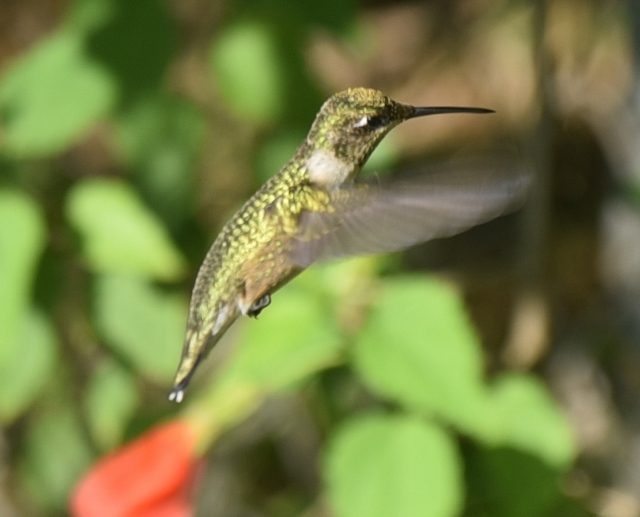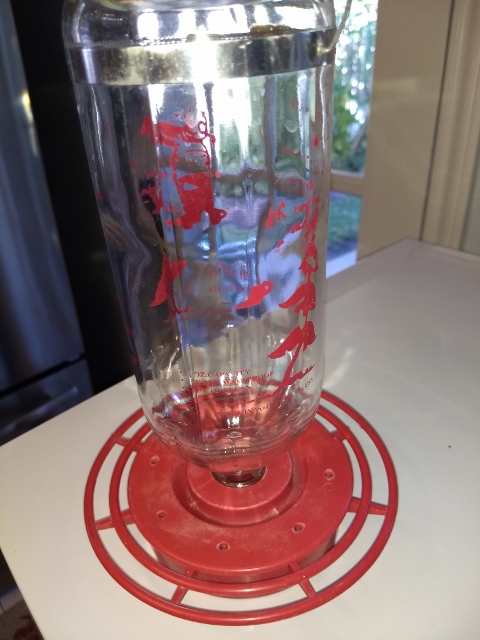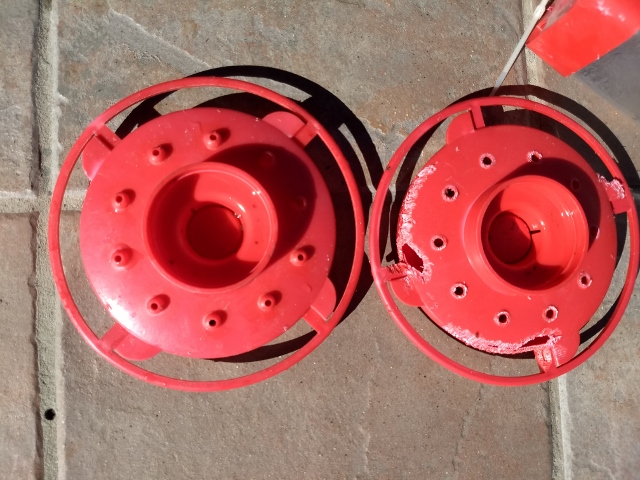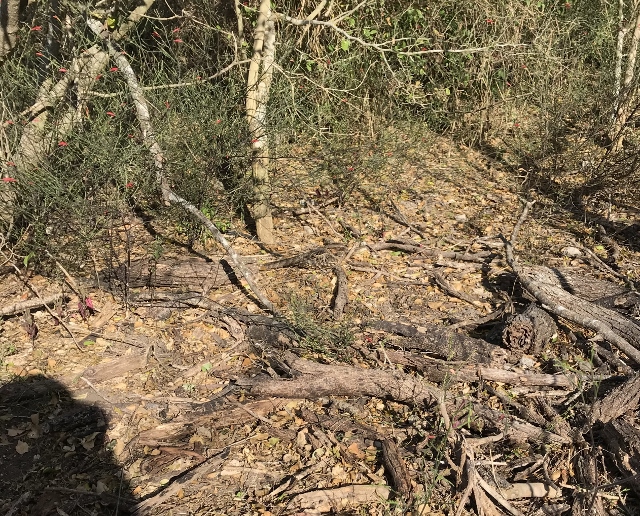
Tony Henehan is our local Texas Parks and Wildlife Department wildlife biologist and now a licensed hummingbird bander — Yay, Tony! Congratulations.
Tony and the Ramsey Hummingbird Brigade are asking for help with hummingbird feeders in Harlingen’s Hugh Ramsey Nature Park to attract more hummers — where Tony has recently held bird-banding sessions.
Norma Friedrich, long-time former president of the Valley’s Arroyo Colorado Audubon Society, (ACAS) is sharing what they have found to be the best routine for success in feeding hummingbirds in Ramsey Park.
If you’re interested in helping out the Ramsey Hummingbird Brigade, Tony and the TPWD supply the feeders and sugar for this project.
The following guidelines are to help ensure the success of the project. They also can be applied to your own backyard.
The best feeder for Ramsey Park is the “Best – 1,” made in Poteet, Texas. It is available at local HEB stores.

The feeder ports on the “Best — 1”are on a flat base which some say is not the best for the hummer’s neck but the benefits outweigh this detail.
Other attributes of this particular feeder include:
- It does not spill water from the flat surface in the wind or when orioles, woodpeckers and even warblers use them as a nectar source.
- This is also the only feeder we tried that bees could not enter the ports and drown in the sugar water.
- Even the bee proof guards did not work with our smaller-than-average RGV bees.
- The glass container is not as easy for raccoons, possums and squirrels to destroy as the plastic varieties.

Shepherd’s hooks are used for hanging the feeders in Ramsey Park. They can be placed away from trees. Clever, but unwanted varmints have learned to use the trees to access the feeders.
A good trick is to grease the pole with Vaseline which helps keep critters from robbing the feeder. Famed hummingbird bander, Kelly Bryan, prefers to use axle grease, they say. Only grease the pole, not the curved top.
The best sugar water recipe is 1 part granulated sugar to 4 parts water.
Tap water is fine to use. The water doesn’t need to be boiled but hot water dissolves the sugar better — think sweet tea made in the South.
Store any unused solution in the refrigerator but note that the longer it stays in the refrigerator the quicker it will sour once it’s put in a feeder outdoors.
Once the feeder is filled, attach the base to the reservoir but leave the feeder upside down until you are ready to hang it. Wipe off any solution spilled on the feeder.
With the heat and humidity of the RGV any sugar water is going to ferment quickly. Ants and gnats getting into the mixture make it spoil all the more quickly. The best practice is to fill feeder with only 1 cup, or 1 ½ cups, of sugar water at a time to prevent waste. Change out the water every other day if signs of floating mold and insects appear in the water.
During migration, feeders can be filled with more solution, but only enough to feed the hummers for a couple of days.
Peak spring hummingbird migration is April
Peak fall hummingbird migration is September
Cleaning is essential to the health of the birds feeding from the feeders. The Ramsey Hummingbird Brigade has found that it’s more convenient to just swap out dirty feeders for clean, newly filled ones. The best practice is for volunteers to take the feeder home and clean it in the kitchen sink with a bottle brush. A small brush also is useful, such as a well-cleaned mascara brush, so the tiny portals get cleaned, too.
If any last bits of mold are clinging to the base and bottle, Norma suggests to add a little Clorox or vinegar to the water and let it soak for an hour “while you watch your favorite TV nature channel.” It’s important to rinse the base and bottle thoroughly and let them air dry.
Most excellent tip from hummingbird expert Carolyn Ohl:
“It has been determined that hanging feeders in clusters attract more hummers; group 3 or 4, or more, together at each location to make a cluster. Having more than one cluster in your yard will give more individuals an opportunity to take advantage of the sugar-water energy source. How does this work? Aggressive birds that try to dominate a single feeder will typically give up trying to defend all the feeders in a cluster, opening access to the other birds present.”
See it for yourself. There are three “seed feeder” areas in Ramsey Park with two or three hummingbird feeders in each area: Hidden Pond on Indigo Trail feeder area, Retama Trail feeder area, and Hummingbird Trail feeder area.
Thank you Norma Friedrich, for your excellent contribution and important information to this post.
The Ramsey Hummingbird Brigade is an ongoing project. If you would like to help with this project please email Norma Friedrich at acaskiskadee@yahoo.com or call 361-676-6416.
ACAS teaches Birding Basics during February. There are two sessions left for this year. Both sessions are free. Meet at the Harlingen Public Library at 410 76 Drive, from 10 a.m. to noon.
- February 20 — Be Nice, Be Quiet, Be Smart is the title — all about the American Birding Association birding ethics. Lecture also includes how to choose binoculars and local places to go birding.
- February 27 — will feature how to use birding apps on your mobile phone to help with bird identification
In other news —
The Great Backyard Bird Count is now!
February 14 through February 17 — It’s easy, it’s fun!
Spending as little as 15 minutes can help!
Check it out: https://gbbc.birdcount.org/
Find the bird in the photo — then join the comments and tell us what you see.


Leave a Reply